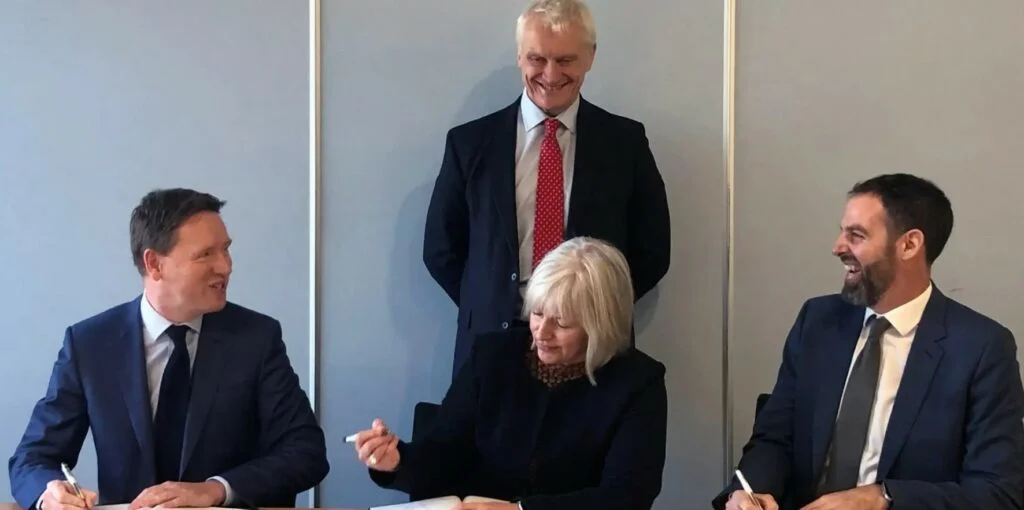Three energy players on the UK Continental Shelf (UKCS) – BP, Equinor and Ithaca Energy – have inked a deal to explore electrification options for their West of Shetland portfolio of oil and gas assets. The options include the possibility of powering these assets with wind energy.
The signing of this Memorandum of Understanding (MoU), which was disclosed on Tuesday, follows the formation of the West of Shetland Electrification (WoSE) group, acting on behalf of the joint venture partners of the Clair, Rosebank and Cambo fields.
The electrification solutions could include power from shore – potentially from onshore wind – or offshore wind. The trio explained in their joint statement that the full electrification would require around 200 megawatts of power.
Graham Stuart, Minister of State for Energy and Climate Change, who witnessed the signing of the MoU during a reception attended by representatives of the three companies, remarked: “I am delighted to host the signing of today’s agreement between BP, Equinor and Ithaca to explore the possibilities of electrifying oil and gas production in the UK.
“This signing is an important step for industry towards reducing their emissions, while protecting jobs and delivering on the commitments in the landmark North Sea Transition Deal.”
In a bid to enable some of the first oil and gas developments on the UK continental shelf to be powered by electricity, the project is seeking to overcome technical challenges presented by the remote and deepwater locations of the fields, as well as some commercial, regulatory, and consenting hurdles.
The WoSE group’s objective to evaluate options for a hub electrification concept is aligned with the North Sea Transition Authority’s and the UK government’s aim of supporting domestic oil and gas production with the lowest carbon footprint possible.
A spokesperson for the WoSE group, highlighted: “This initiative seeks to evaluate the technical, commercial, and regulatory challenges of various low-carbon power hub solutions to recommend a technically and commercially viable option that can meet the requirements of the three field owners within the respective project timeframes.”
In addition, this supports not only the North Sea sector’s ambitions to become a net-zero basin but also the North Sea Transition Deal, which commits the industry to reduce emissions from production operations by at least 50 per cent by 2030, against a 2018 baseline, on the path to net-zero by 2050.
“Continued production from the West of Shetland supports the UK government’s drive for home-grown oil and gas with a lower carbon footprint while protecting the jobs, skills and supply chain needed to drive the energy transition. Each of the companies in the WoSE group is proud to be playing its part,” added the spokesperson for the WoSE group.
Commenting on this MoU, the North Sea Transition Authority (NSTA), said: “We welcome BP, Equinor and Ithaca Energy’s commitment to explore options for platform electrification, which is essential to meet emissions reduction targets agreed by industry and government – ensuring the UK’s oil and gas production is as clean as possible.
“We have consistently pressed the sector to deliver on electrification and stand ready to support the partners as they move forward with their plans.”
When it comes to the electrification of oil and gas facilities in the UK with offshore wind, it is worth noting that an agreement was signed between an oil and gas operator and a green energy and infrastructure developer a few months ago for the creation of one of the UK’s first wind-powered oil and gas production facilities.
A few days later, Ping Petroleum UK renamed this FPSO, which will be powered with a floating offshore wind turbine, expected to be one of the largest ever built in the UK. Previously known as theSevan Hummingbird, the vessel was renamedExcaliburahead of its deployment at theAvalon Developmentin the North Sea.






